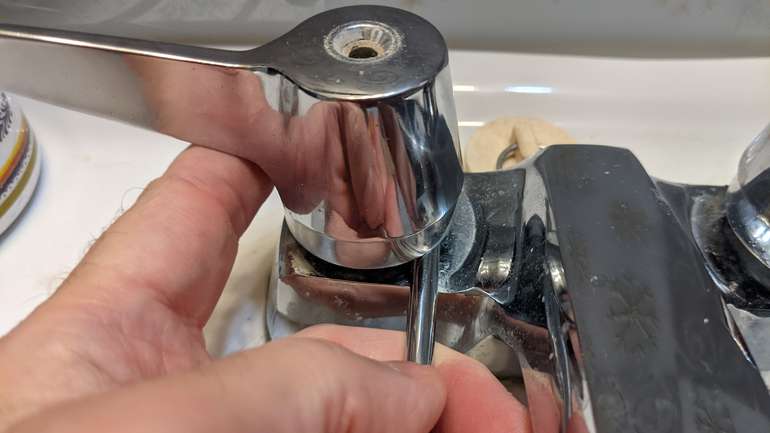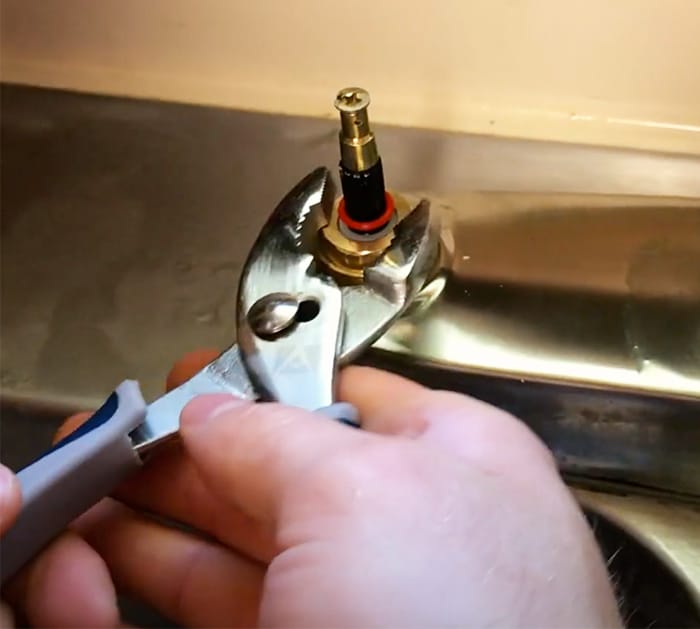How It's Important to Rectify a Malfunctioning Faucet
CallWe have stumbled on the article on 4 Common Reasons for a Leaky Faucet directly below on the internet and believe it made sense to discuss it with you on my blog.

Trickling faucets could look like a small inconvenience, however their effect surpasses just the nuisance of the audio. From drainage to incurring unnecessary economic costs and health and wellness threats, overlooking a leaking faucet can cause various repercussions. In this post, we'll delve into why it's critical to address this common house concern promptly and properly.
Waste of Water
Environmental Effect
Trickling faucets add considerably to water wastefulness. According to the Environmental Protection Agency (EPA), a single faucet leaking at one drip per secondly can waste more than 3,000 gallons of water per year. This not just pressures water resources but additionally impacts ecological communities and wild animals dependent on them.
Financial Expenses
Boosted Water Expenses
Beyond the environmental effect, dripping faucets can inflate water bills substantially. The built up waste in time translates into greater energy costs, which might have been avoided with prompt fixings.
Possible Building Damages
In addition, long term trickling can lead to harm to components and surfaces surrounding the faucet. Water build-up can trigger discoloration, deterioration, and also structural issues if left neglected, causing added repair costs.
Health Concerns
Mold and Mildew Growth
The consistent visibility of dampness from a trickling tap produces a suitable atmosphere for mold and mildew development. These fungi not only endanger interior air high quality yet additionally present health risks, particularly for individuals with respiratory system conditions or allergic reactions.
Waterborne Diseases
Stationary water in trickling taps can end up being a breeding ground for bacteria and other virus, increasing the risk of waterborne diseases. Impurities such as Legionella bacteria prosper in stationary water, potentially causing significant diseases when consumed or breathed in.
Do it yourself vs. Professional Repair work
Benefits and drawbacks of Do It Yourself Repair Service
While some might try to deal with a dripping tap themselves, DIY repairs come with their very own collection of obstacles. Without appropriate knowledge and devices, do it yourself efforts can aggravate the concern or bring about incomplete repairs, lengthening the issue.
Advantages of Employing a Professional Plumber
Employing a professional plumber makes certain that the underlying source of the trickling tap is attended to successfully. Plumbing technicians have the competence and devices to diagnose and fix tap problems efficiently, conserving time and lessening the threat of additional damage.
Step-by-Step Overview to Repairing a Dripping Tap
Tools Required
Prior to trying to fix a dripping tap, collect the required tools, including a flexible wrench, screwdrivers, substitute components (such as washers or cartridges), and plumber's tape.
Typical Faucet Issues and Their Solutions
Identify the sort of faucet and the certain problem causing the drip. Typical problems consist of damaged washers, rusty shutoff seats, or malfunctioning O-rings. Describe supplier instructions or on the internet tutorials for detailed guidance on repair services.
Safety nets
Normal Upkeep Tips
To avoid leaking taps, execute routine maintenance such as cleansing aerators, inspecting for leaks, and replacing worn-out parts promptly. Furthermore, take into consideration setting up water-saving devices or upgrading to much more effective fixtures.
Importance of Prompt Repairs
Dealing with dripping taps as quickly as they're observed stops further water wastage and possible damages, ultimately conserving both water and cash over time.
Impact on Residential Property Value
Assumption of Well-Maintained Building
Preserving a home in good condition, including attending to maintenance problems like dripping taps, boosts its viewed worth and desirability amongst prospective purchasers or lessees.
Influence on Resale Value
Properties with well-kept plumbing components, consisting of faucets, command higher resale worths in the property market. Addressing leaking faucets can add to a favorable impact during residential property examinations and negotiations.
Environmental Responsibility
Private Contribution to Conservation
Taking obligation for repairing leaking faucets aligns with more comprehensive efforts towards water preservation and ecological sustainability. Every individual's actions collectively make a significant impact on maintaining priceless resources.
Sustainable Living Practices
By prioritizing punctual repair services and embracing water-saving practices, people add to sustainable living techniques that benefit both present and future generations.
Final thought
Dealing with a trickling tap goes beyond plain benefit; it's an important step towards conserving water, lowering monetary costs, and safeguarding wellness and property. Whether through do it yourself fixings or professional help, doing something about it to repair dripping taps is a tiny yet impactful means to promote liable stewardship of resources and contribute to a much healthier, extra lasting future.
How to Fix a Dripping or Leaky Faucet
A leaking faucet is one of the most common problems that homeowners encounter, but it being commonplace doesn’t make it any less annoying. The constant drip drip drip of a leaking bathtub faucet, showerhead, or sink tap can disturb your home’s serenity. Left neglected, a dripping faucet can also result in higher water bills and discoloration or mold growth in your sink or plumbing fixtures.
Fortunately, you don’t have to be a trained plumber to know how to stop a dripping faucet. With some basic tools, replacement parts, and a little patience, leaky faucet repair is a breeze. In this article, we’ll explain what causes dripping faucets and how you can fix them.
What Causes a Leaking Faucet?
Kitchen and bathroom faucets come in all manner of designs, but most involve some combination of valves, O-rings, seals, and washers. The O-ring is usually the weakest link, but any one of these pieces can wear down over time. Heat, moisture, temperature fluctuations, minerals, mold, and movement can contribute to warping and corrosion, breaking the watertight seal. This just comes with the territory of being a homeowner. Everything is always subject to wear and tear, and some component parts of your appliances and fixtures need to be replaced on occasion. At least replacement O-rings are cheap!
More rarely, dripping faucets can be a symptom of excessively high water pressure. Were this the case in your home, you would probably notice that the leak is not isolated to one faucet. Water pressure issues are harder to resolve on your own. We recommend contacting a professional plumber if you suspect your water pressure is too high.
How to Fix a Dripping Faucet
Pipe wrench or monkey wrench Allen wrench set Screwdrivers Old towel or rag Shut off the water.
Before you do anything, you need to turn off the water to keep from drenching your kitchen or bathroom. You should find a valve under the sink and against the wall. Once you’ve turned this valve, try turning the faucet on to confirm that the water source has been cut off.
If you can’t locate your local valve for the faucet you’re working on, you can always shut off the water to the house at the main valve. Of course, this will prohibit anyone from using the sinks, showers, or toilets while you’re working on the faucet that’s giving you trouble.
Plug or block the drain.
You’ll be disassembling the faucet and removing some small bits of hardware. Plug the drain with a stopper or rag to avoid the possibility of a small screw falling into your P-trap.
Take apart the faucet assembly.
There are several varieties of kitchen and bathroom faucets, each with its own manner of assembly. For detailed instructions on how to disassemble your faucet, you can refer to the fixture’s manual or contact the manufacturer. If you know whether you have a ball, disc, cartridge, or compression faucet, you can find detailed schematics online.
In general, you need to begin by removing the faucet handles. You might notice a small screw that you’ll need to remove with a screwdriver or Allen wrench. If you don’t see any visible securing hardware, it’s likely hidden under a decorative cap that can be unscrewed or popped off with flathead screwdriver.
Remove each piece methodically, consulting a schematic when necessary. Take notes or arrange the pieces in such a way to make it easier to correctly reassemble the faucet later.
Remove the cartridge.
Once you’ve removed the handles and securing hardware, you should be able to remove the valve cartridge or stem. Some cartridges will slide right out. Other faucet models will require you to loosen a nut with a pipe wrench before you can remove the valve stem.
Examine the exposed hardware.
With the cartridge or stem removed, inspect the component parts. Check the rubber O-rings for wear and tear. Also examine the seat washer for corrosion or other damage. These pieces are usually the responsible parties for a dripping faucet, but it’s worth inspecting the other component parts while you have the faucet disassembled.
Find replacement parts.
Once you’ve identified which faucet component has failed, find an identical replacement. Your local hardware store should have O-rings, seat washers, and other standard components in stock. If you have a luxury or uncommon faucet, you may have to contact the manufacturer for a replacement part.
It’s a good idea to take your old parts with you to the hardware store so you can compare them with the store’s inventory and be sure you’re purchasing the correct replacement.
Reassemble the faucet.
With your new parts in hand, reconstruct the faucet and handles. Don’t be tempted to overtighten screws or nuts. You might think this could create a better seal, but it can instead damage or bend a delicate part of the assembly and create a new problem for you.
Turn on the water and test the faucet.
The only thing left to do is test your work. Unplug the sink, turn the water back on, and try the faucet. Congratulate yourself on a job well done!
https://www.libertyhomeguard.com/how-to-fix-a-dripping-or-leaky-faucet/

Do you appreciate more info about How to Fix a Dripping or Leaky Faucet ? Post a comment down below. We will be glad to know your opinions about this blog. In hopes that you come back again in the near future. Sharing is good. Helping people is fun. Many thanks for your time. Come back soon.